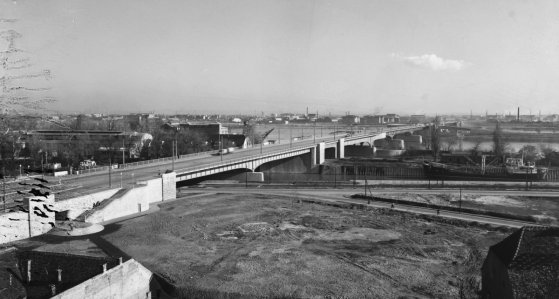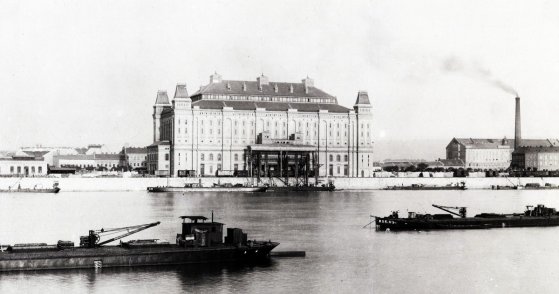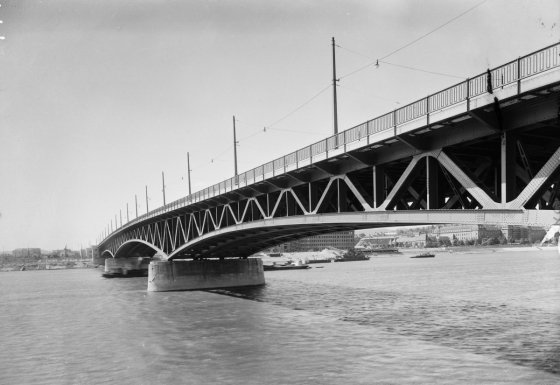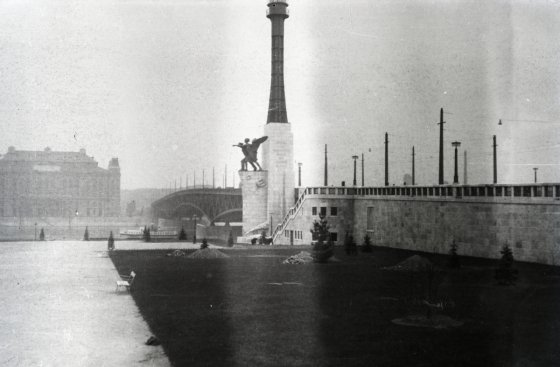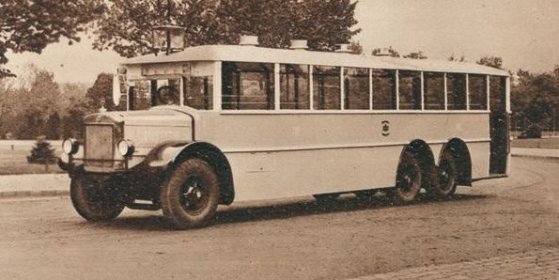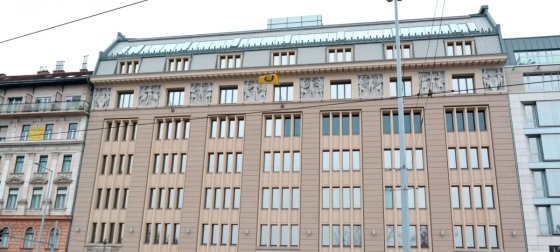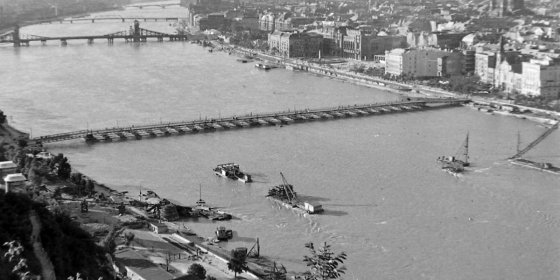 The „intertwined history” of the bridges and the city of Budapest
Which ideas and events have shaped the fate of bridges of Budapest and the cityscape? Alongside many other interesting facts, this question is also answered this newly published book by the Budapest City Archives, which introduces the history of bridges in Budapest.
The „intertwined history” of the bridges and the city of Budapest
Which ideas and events have shaped the fate of bridges of Budapest and the cityscape? Alongside many other interesting facts, this question is also answered this newly published book by the Budapest City Archives, which introduces the history of bridges in Budapest.
Boráros Square
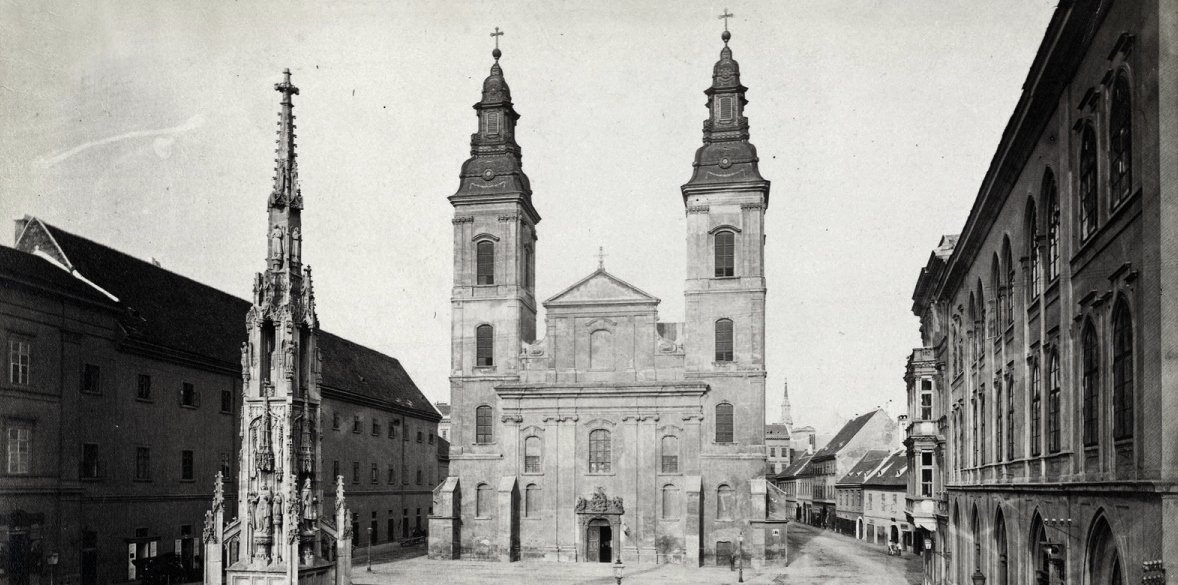 Tunnels instead of bridges? – An unrealised plan from the 19th century to connect Pest and Buda
Tunnels instead of bridges? – An unrealised plan from the 19th century to connect Pest and Buda
March 11, 2023 at 2:30 PM
The plan to build road tunnels under the Danube instead of bridges was seriously considered in Budapest already 130 years ago. Proponents argued that tunnels were cheaper, more sustainable and less militarily vulnerable. This idea was on the agenda for years, but the tunnels were not built in the end.
The competition of the bridges was decided at a meeting
March 10, 2023 at 11:00 AM
Should the Árpád or the Petőfi Bridge be built first? This was the dilemma that preoccupied the rebuilders of the bridges in Budapest in 1948. The question was not new, the same decision had to be made once 20 years earlier. At that time, the bridge at Boráros Square "won", but after the destruction of World War II, the question was again whether to continue the work with the blown-up bridge at Boráros Square or the half-finished Árpád Bridge.
The afterlife of a grain warehouse - The 140-year-old Elevator House on Boráros Square was a real sight
March 7, 2023 at 3:00 PM
From the 1870s, huge construction works were carried out in Budapest, which was developing into a metropolis. Of course, the Hungarian capital, as the country's economic, commercial and industrial centre not only grew at an ever-accelerating rate in terms of its residential and public buildings, but its industrial sites also multiplied, and their sizes occupied an ever-larger area. An important logistics centre was established close to the southern connecting railway bridge.
The rebuilt Petőfi Bridge was handed over 70 years ago
November 23, 2022 at 11:00 AM
When the predecessor of today's Petőfi Bridge was completed in 1937, there was hardly any traffic on it, as the Buda side was largely undeveloped. It was only given a short time as it was destroyed eight years later along with the other Danube crossings in Budapest. When the reconstruction of the bridges began, it was preceded by the restoration of several crossings, then it was finally handed over only in 1952. The new structure was three metres wider, and it also had a bicycle track, which was also important at the time because many people used it to go to work since cars were not allowed for private use.
Horthy Miklós Bridge was built eighty-five years ago - After the post-war reconstruction, it became Petőfi Bridge
September 10, 2022 at 10:00 AM
The Petőfi Bridge is perhaps the least known bridge in inner city Budapest. It is not a spectacular creation, it is not photographed by visiting tourists, but still, from a traffic point of view, it is one of the most important crossings in the city. The bridge was handed over 85 years ago, on 12 September 1937, back then it was called Horthy Miklós Bridge.
Buses appeared on the Outer Ring Road ninety years ago - the public could travel for free on the first one
January 25, 2022 at 9:00 AM
The tram has belonged to the scenery of the outer ring road for almost a quarter of a century now. Traffic on the ring road is unthinkable without it, but there was a time when trams were not enough, so from 1932, for 57 years, buses also ran on the Outer Ring Road. They started on 25 January, 1932, just 90 years ago.
Art Deco on Boráros Square – Former headquarters of the Hangya Cooperatives turns 100
February 6, 2021 at 11:00 AM
In 1920 a new chapter began in the life of the Hangya Cooperative, which once had shops all over the country. The company decided to celebrate the upcoming 25th anniversary of its creation by building a new headquarters. The art deco-style building designed by Dénes Györgyi was completed quickly at present-day 30 Közraktár Street. The proud palace has stood for one hundred years on the three plots, highlighting the former success of the Hangya Cooperative.
Böske Bridge – The story of Petőfi Pontoon Bridge
November 20, 2020 at 9:00 AM
Following the devastation of World War II a series of temporary bridges were constructed in Budapest to ensure movement around the city. One of these was the Petőfi Pontoon Bridge, which was named after the fact that it connected Petőfi Square in Pest, with Döbrentei Square in Buda, not far from the ruins of Erzsébet Bridge. However, the population quickly became to use the slightly more ingenious name, Böske Bridge, Böske being a common Hungarian nickname for Erzsébet or Elizabeth. The name Petőfi Bridge was later inherited by a completely different structure.
Built on a freight station: the Millennium City Centre
November 17, 2020 at 9:00 AM
Budapest is a city of constant change. This is especially true for parts of the city that were once industrial centres or served these industries. The decaying remains of 100–150-year-old factories are often called rust belts. While the future of many of these areas remains uncertain, some examples have been completely transformed and given an entirely new lease on life. Over the past 25 years, the Millennium City Centre has sprouted where the Danube-Bank Freight Station once stood and has become such an area.
More articles
 The „intertwined history” of the bridges and the city of Budapest
Which ideas and events have shaped the fate of bridges of Budapest and the cityscape? Alongside many other interesting facts, this question is also answered this newly published book by the Budapest City Archives, which introduces the history of bridges in Budapest.
The „intertwined history” of the bridges and the city of Budapest
Which ideas and events have shaped the fate of bridges of Budapest and the cityscape? Alongside many other interesting facts, this question is also answered this newly published book by the Budapest City Archives, which introduces the history of bridges in Budapest.
 The Bridge Report, which brought a turning point in the history of Budapest
A travel report that changed the history of Pest and Buda, as well as Hungary. The little book contributed to the change of half a thousand years of legal customs and the implementation of an investment of unprecedented size and technical quality. This book was The Bridge Report [Hídjelentés in Hungarian].
The Bridge Report, which brought a turning point in the history of Budapest
A travel report that changed the history of Pest and Buda, as well as Hungary. The little book contributed to the change of half a thousand years of legal customs and the implementation of an investment of unprecedented size and technical quality. This book was The Bridge Report [Hídjelentés in Hungarian].
 Drama on the university wall - The heroic monument was planned 95 years ago
In the constant hustle and bustle of the Egyetem Square in Pest, the students may not even notice the monument that decorates the short section of wall between the church and the central building of ELTE. However, it commemorates their predecessors, the heroes who fought for their country in World War I, and those who heroically helped them. The first design of the dramatically collapsing soldier was born in 1928, ninety-five years ago.
Drama on the university wall - The heroic monument was planned 95 years ago
In the constant hustle and bustle of the Egyetem Square in Pest, the students may not even notice the monument that decorates the short section of wall between the church and the central building of ELTE. However, it commemorates their predecessors, the heroes who fought for their country in World War I, and those who heroically helped them. The first design of the dramatically collapsing soldier was born in 1928, ninety-five years ago.

